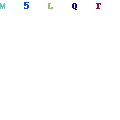1. Question
What is used to create the OSPF neighbor table?- adjacency database
2. Question
Which OSPF component is identical in all routers in an OSPF area after convergence?- link-state database
3. Question
Which OPSF packet contains the different types of link-state advertisements?4. Question
What happens immediately after two OSPF routers have exchanged hello packets and have formed a neighbor adjacency?- They exchange abbreviated lists of their LSDBs.
5. Question
What will an OSPF router prefer to use first as a router ID?- any IP address that is configured using the router-id command
6. Question
What are the two purposes of an OSPF router ID? (Choose two.)- to uniquely identify the router within the OSPF domain
- to facilitate router participation in the election of the designated router
7. Question
By default, what is the OSPF cost for any link with a bandwidth of 100 Mb/s or greater?- 1
8. Question
Which command should be used to check the OSPF process ID, the router ID, networks the router is advertising, the neighbors the router is receiving updates from, and the default administrative distance?- show ip protocols
9. Question
What are two reasons that will prevent two routers from forming an OSPFv2 adjacency? (Choose two.)- mismatched OSPF Hello or Dead timers
- mismatched subnet masks on the link interfaces
10. Question
Which three addresses could be used as the destination address for OSPFv3 messages? (Choose three.)- FE80::1
- FF02::5
- FF02::6
11. Question
A network administrator enters the command ipv6 router ospf 64 in global configuration mode. What is the result of this command?- The OSPFv3 process will be assigned an ID of 64.
12. Question
When a network engineer is configuring OSPFv3 on a router, which command would the engineer issue immediately before configuring the router ID?- ipv6 router ospf 10
13. Question
Single area OSPFv3 has been enabled on a router via the ipv6 router ospf 20 command. Which command will enable this OSPFv3 process on an interface of that router?- ipv6 ospf 20 area 0
14. Question
What does a Cisco router use automatically to create link-local addresses on serial interfaces when OSPFv3 is implemented?- an Ethernet interface MAC address available on the router, the FE80::/10 prefix, and the EUI-64 process
15. Question
Which command will verify that a router that is running OSPFv3 has formed an adjacency with other routers in its OSPF area?- show ipv6 ospf neighbor
16. Question
Which command will provide information specific to OSPFv3 routes in the routing table?- show ipv6 route ospf
17. Question
Match the OSPF state with the order in which it occurs. (Not all options are used.)
CCNA3 v6.0 Chapter 8 Exam 0118. Question
Match each OSPF packet type to how it is used by a router. (Not all options are used.)
CCNA3 v6.0 Chapter 8 Exam 0219. Question
By order of precedence, match the selection of router ID for an OSPF-enable router to the possible router ID options. (Not all option are used.)
CCNA3 v6.0 Chapter 8 Exam 0320. Question
Match the information to the command that is used to obtain the information. (Not all options are used.)
CCNA3 v6.0 Chapter 8 Exam 0421. Question
Fill in the blank.
OSPF uses cost as a metric.22. Question
Fill in the blank.
The election of a DR and a BDR takes place on multiaccess networks, such as Ethernet networks.23. Question
Open the PT Activity. Perform the tasks in the activity instructions and then complete the task.What message is displayed on http://www.ciscoville.com?- Completion!
Home »
» Cisco CCNA 3 Chapter 8 version 6.0 Exam Answers












0 commentaires:
Enregistrer un commentaire